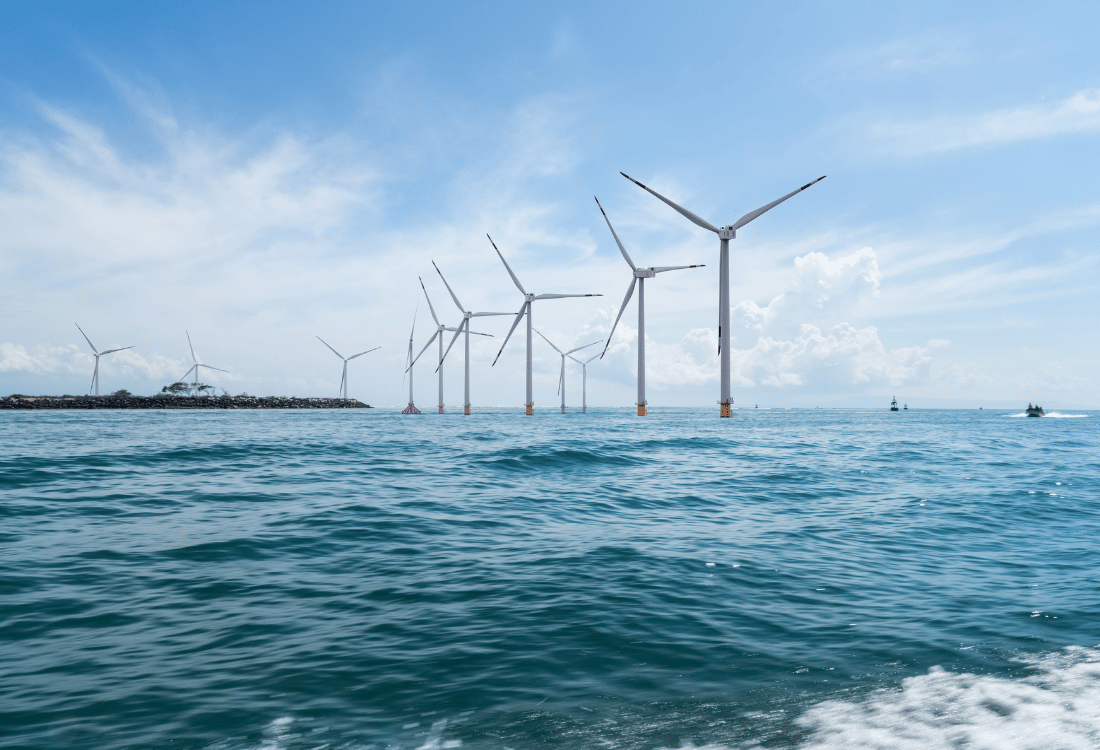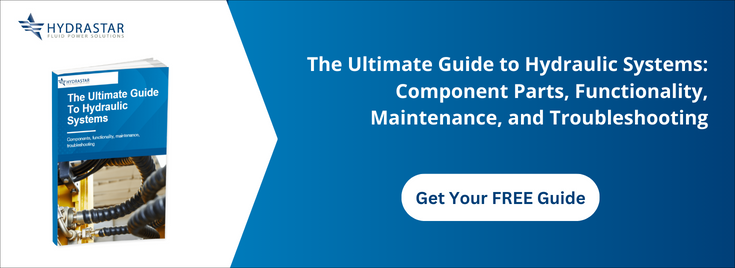Offshore wind-powered renewables are a burgeoning sector in the UK, with large coastal installations now contributing significantly to the national renewable energy stock. Central to the efficiency and functionality of these offshore installations are a range of advanced fluid power systems. These applications play a vital role in optimising the operations and maintenance of offshore wind farms, helping sustain their reliability in an exposed and frequently hazardous marine environment.

Hydraulic Systems Used In Windfarms
Hydraulic systems are the operational lifeblood of all modern wind turbines – facilitating pitch and yaw adjustments to optimise blade angles for maximum energy capture, and providing critical damping at the high stress points of turbine structures.
There are several examples of hydraulic systems being used during the construction of wind energy installations, too. For example, an innovative remote-operated hydraulic tooling system can now be used for subsea bolt tensioning – reducing the need for engineers in situ and accelerating the installation process. This reduces the time and risk associated with underwater operations, as well as significantly lowering labour expenses.
The innate capacity of hydraulic applications to handle high pressures and generate immense force also makes them uniquely suitable for heavy lifting and transport during the construction phases of offshore wind farms, and subsequent maintenance activities.
As well as this, hydraulic wind power systems contribute to making wind turbines more efficient by using a hydraulic power transmission system. These systems replace the traditional large volume and high mass gearbox and post-processing equipment, such as converters, used in wind turbines, with a more streamlined and efficient mechanism. This not only reduces the weight and complexity of an offshore turbine’s nacelle but also contributes to lower maintenance costs and improved reliability.
Pneumatic Systems Used In Windfarms
And what about pneumatic systems? Complementing their hydraulic counterparts, various pneumatic systems are also used in offshore wind farm operations. Utilising highly compressed air to execute a variety of precision tasks, from breaking to emergency safety functions, pneumatic applications give engineers the simplicity and speed crucial to sustain the automated operations of wind turbine installations.
One of the advantages of pneumatic systems for offshore applications is their light weight. In large-scale installations in which every kilogram counts, powerful and efficient pneumatic systems contribute not only to the performance and safety of turbine components, but also to overall weight reduction.
Integrating Hydraulic And Pneumatic Systems
Increasingly, offshore engineers are turning to fluid power solutions that integrate both pneumatic and hydraulic technologies, in order to hone the efficiency of offshore wind farms. These interdependent fluid power systems collaborate to achieve high load tasks with enhanced reliability, striking a key balance between force and finesse.
Fluid Power Systems And The Pursuit Of Clean Energy
In the UK’s increasing pursuit of greener and cleaner renewable energy, there are numerous examples where both hydraulic and pneumatic systems have been instrumental in delivering greater safety, performance, and efficiency. To find out more, or to discuss a project with one of our experienced team, please contact one of the experts at Hydrastar today by clicking here.
Image Source: Canva


